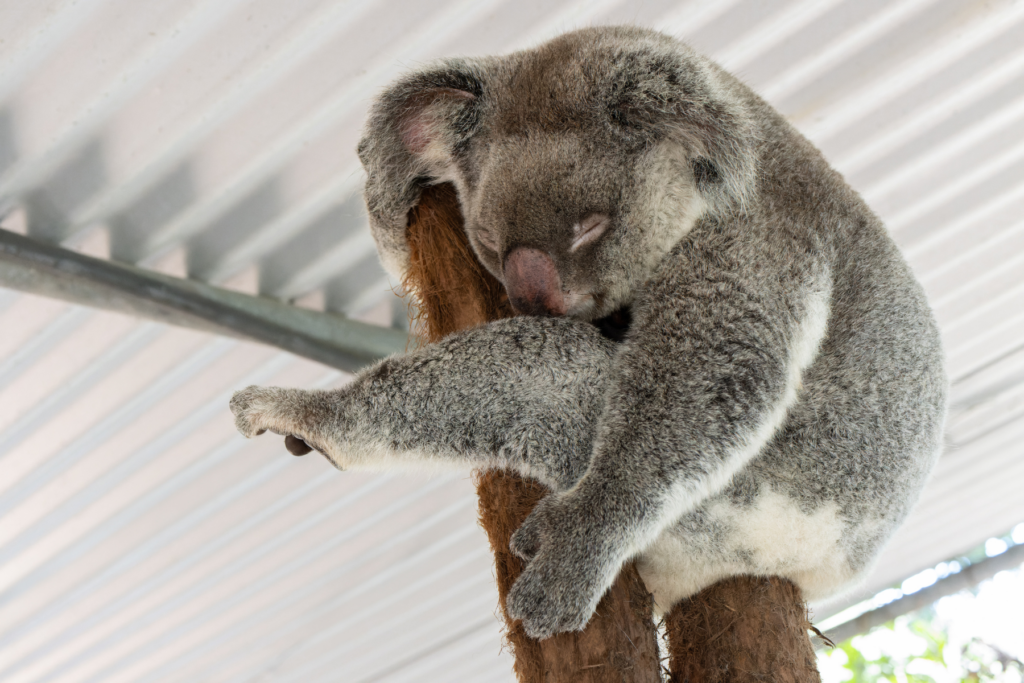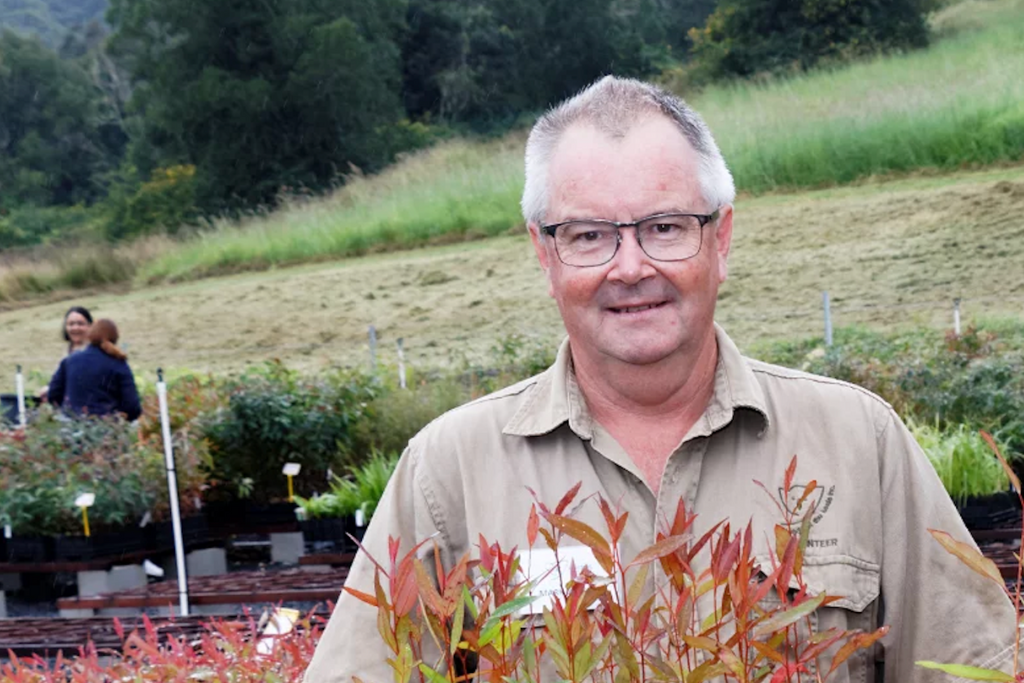I had never seen a koala before coming to Lismore in 1968, but that all changed when I had the opportunity to join wildlife researcher, George Wilson on a koala monitoring project at the Tucki Tucki Reserve. At the time koalas were seen daily in roadside trees between Lismore and Wyrallah and beyond, and research focussed on ways to prevent overgrazing of the sparse Forest Redgums along the Richmond River. To prevent koalas from killing the trees, metal barriers were nailed to tree trunks to keep koalas out. Some ghost tree skeletons still remain today, a visual reminder of the risks of overgrazing by koalas.
In the early 70s, I operated a vet practice in Carrington Street, Lismore. The office for National Parks and Wildlife Service (NPWS) was in the same building, so I saw a lot of Ranger Stuart Heilbron and the koalas that were brought in and subsequently treated by other vet practices.
There was a serious flaw in this line of emergency care. As with other wildlife emergencies, most of the mishaps occurred at night with no NPWS staff available.
When Friends of the Koala became licensed to rescue and rehabilitate koalas in 1989, I was contacted by then President, Ruth Barratt and member Julie Leeson to provide assistance in treating koalas injured on the road or attacked by dogs or ill from disease. While I knew very little about koalas at this stage, I was enthusiastic to offer my support.
At the time, all koala care was home-based, and our volunteers had to provide all facilities AND the labour to rescue, house and feed their patients. The way I saw it, the volunteers were doing all the work: all I contributed was some inexperienced veterinary support and whatever medications were required. We learned well together, and I eventually became to be acknowledged as FOK’s Honorary Veterinarian.
Because of my lack of experience with koalas, I established an early link with Russ Dickens, an older vet at Blacktown, already knowledgable about koala treatment. He advised me on drugs to sedate and treat them safely (for them and us) as well as educated me about the often-fatal outcome of treating koalas with long-acting antibiotics, specifically tetracyclines. Stuart told me himself how this “breakthrough” treatment substantially reduced the work required for koala rehab.
That early koala team had some great success with koalas severely injured in road trauma, and some dismal failures with dog attacks and disease. By today’s standards, for euthanasia early when death is a predictable final result, our decisions were sometimes wrong, but knowledge is progressive when one starts from total ignorance, albeit guided by an expert.
Friends of the Koala expanded when it officially became licensed to rescue and rehabilitate koalas in 1993 and when the Care Centre was built and officially opened in 1996. I served as fourth President from 1997 to 2003 and probably treated over 400 koalas during my time at Friends of the Koala.
It’s gratifying to see, that Friends of the Koala has continued to evolve from such humble beginnings with effective and strategic partnerships. Knowledge about the koala has advanced and we are much more confident in the likely outcomes for animals presented sick or injured. The veterinary care has progressed to FOK engaging a permanent team of veterinary staff, making the Koala Hospital much better prepared. Well done FOK!





